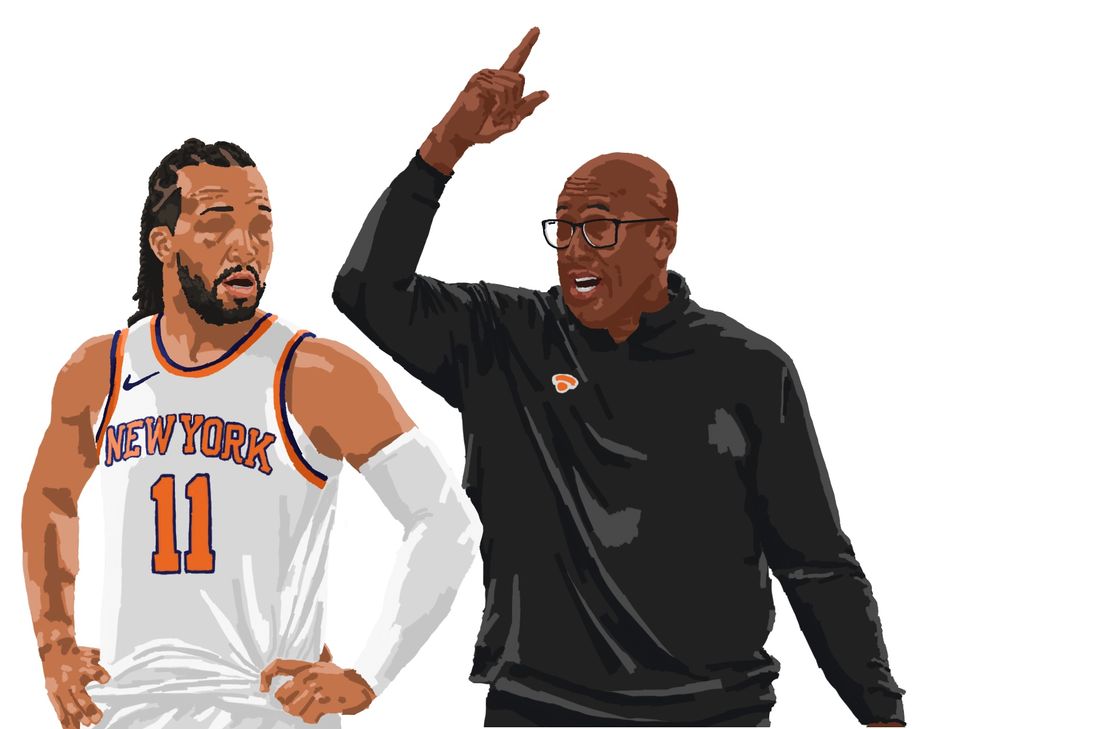The Knicks’ Next Chapter
The Knicks enter the 2025/26 campaign under new head coach Mike Brown as they chase the franchise’s first championship in over 50 years.
Reading Time: 4 minutes

A historic 2024/25 campaign culminating in the Eastern Conference Final for the first time in 20 years sets the expectations high for the New York Knicks’ 2025/26 season. The Knicks’ last season was defined by late-game winners and a defensive grittiness that anchored them through tough matchups. The Knicks enter the season with several major changes aimed at addressing the flaws that contributed to their loss at the hands of the Indiana Pacers. With new roster additions and tactical changes, the Knicks hope to capitalize on their championship window and finally bring the Larry O’Brien trophy to New York.
In the aftermath of a second-straight Knicks elimination by the Pacers, the front office decided that it was time for a new direction, parting ways with head coach Tom Thibodeau. Thibodeau was often criticized during his tenure for his underutilization of the bench, which many fans believed led to the fatigue that plagued the Knicks in their playoff run. Thibodeau rarely changed from the established starting five, displayed by the Knicks’ use of just 12 starting lineups in 96 games—the fewest in the entire NBA. Ultimately, Thibodeau’s reluctance to make changes led to his firing; many believe that a team with title aspirations requires a coach capable of adjusting and rotating the lineup when necessary to prevent the team’s play from becoming predictable. Knicks President of Basketball Operations Leon Rose emphasized that “our organization is singularly focused on winning a championship for our fans,” which prompted hiring former Sacramento Kings head coach Mike Brown.
Brown brings a championship pedigree with him to New York, having served as an assistant coach with the Golden State Warriors in their multiple title runs. Brown’s experience in handling high-pressure playoff situations makes him a strong fit for the Knicks in their pursuit of a championship. Brown has also demonstrated his ability to steer a team through the grind of the regular season, having also won two NBA Coach of the Year awards.
From a tactical standpoint, he differs from Thibodeau in a few areas. While Thibodeau’s system emphasized defensive intensity and a preference to stay with an established starting five, Brown has clearly established a goal of ensuring the team’s structure is built for success in May, not January. To accomplish this, Brown places a greater emphasis on rotation and resting his starters. Offensively, Brown emphasizes a fast-paced attack heavily reliant on constant movement to create open looks—a system in which guards thrive.
Beyond the team’s style of play, Brown also seeks to create a team environment founded on accountability and commitment. In Sacramento, he initiated what was described as an “All-in” contract, signed by all players and members of the franchise. In this contract, Brown spelled out his demands and expectations early on in the season and emphasized effort and selflessness both on and off the court. In the past, he has also shown openness in criticizing both underperforming players and himself in front of the media, showcasing a transparency that holds everyone to a higher level of accountability.
The core of the Knicks roster has remained largely intact after the offseason. Guards Jalen Brunson and Mikal Bridges lead the Knicks’ offense. Brunson’s playmaking and Bridges’s ability as a two-way guard gave New York one of the league’s most balanced backcourts. Bridges averaged 17.6 points and 3.2 assists in his first season with the Knicks, and Brunson hopes to build off a strong campaign after being named to the 2024/25 All-NBA Second Team, along with winning Clutch Player of the Year.
Surrounding the backcourt is the muscle of the team’s lineup, with small forward Josh Hart, power forward OG Anunoby, and center Karl-Anthony Towns. Hart’s energy and physicality add to the team’s intensity, while Anunoby and Towns have established themselves as reliable options on both the offensive and defensive ends of the floor. Anunoby remains the team’s defensive anchor, averaging 1.6 steals per game, while Towns solidifies himself as a scoring outlet with 24.4 points and 9.2 rebounds per game, creating one of the most dynamic frontcourts in the conference.
The only notable exits the Knicks saw during the off-season were forward P.J. Tucker and center Precious Achiuwa. These holes in the roster were filled with the additions of Utah Jazz guard Jordan Clarkson and free-agent forward Guerschon Yabusele. Clarkson adds more scoring off the bench and takes the pressure off Brunson, who shouldered significant game time last season, averaging 35.4 minutes per game in the regular season and 37.8 minutes in the postseason. On the defensive end of the floor, Yabusele’s exceptional rebounding and physicality offer the Knicks more versatility in the frontcourt. Both Yabusule and Clarkson bring experience and depth to a bench already featuring guards Miles McBride and Tyler Kolek, along with center Mitchell Robinson. These reinforcements give Brown the balance and depth necessary to implement his vision while also ensuring the roster remains fresh throughout the season.
With a revitalized bench, proven coach, and one of the best starting fives in the league, the Knicks have built the foundation necessary to make a deep push in the playoffs. Whether that foundation can withstand the marathon of an 82-game season remains to be seen. After years of operating under Thibodeau’s grittiness, New Yorkers will have to be ready to adopt a new identity under the Brown era that may just finally deliver the long-awaited Larry O’Brien Trophy.
